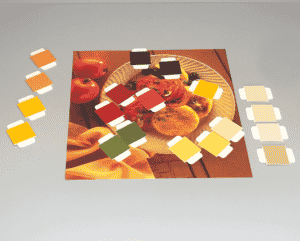Color Behind Fashion
Article written by Dory Newman.
Founder and Color Consultant at Color Remedy Consulting
Growing up, I remember going to the mall with my friends. We would stroll around, store to store, looking for the newest trends but what would always catch my eye was the beautiful, vastly colored t-shirt displays in every store. I remember thinking to myself, how do all these clothes end up in these stores?
It wasn’t until I landed my first job in fashion and discovered the process behind getting all of those products into the store. The reality of the number of steps, people, and time that it takes for a product lifecycle completion was unbelievable to me.
There is so much more that goes into that t-shirt display than anyone outside of the fashion industry could ever realize.

The focus early on in my career was on the color process. Everything about color spoke to me; the infinity of rainbow shades, the small differences that I could see between two colors, and how opposites complemented each other so well together. I loved how just the color of my clothing could make me feel happy, serious, or confident.
In the business of fashion, I became what is known as a Colorist. When I would tell people my job title, I got one of two responses – “Colorist, like for hair?” or “That’s a job?” As a Colorist, my process would start by working with the designers. I would take an item that inspired them, whether that was a feather, a painting, an antique perfume bottle, or even a cookie and “converts” that into a color for a piece of clothing. I learned early on that everyone has their own process. Designers can look at an impressionist painting or Lucite boxes and visualize a collection of dresses. It was my job to translate that impressionist painting into something that a fabric mill could use to match a color to.
As I moved up in my career, I realized that there was a lot more to “color” than the color of the clothes. Besides the inspiration or trend that I initially helped Designers with, there is an entire supply chain process that is behind the scenes.
Getting the color right, on time, and produced for less money is the key to success and taking the best practices from all my work experience is a gift.

This realization helped me shift my focus to consulting and starting my own business – Color Remedy Consulting. Being able to help retailers create and implement a color process that works more efficiently and for less money became my goal.
As a Color Consultant, I have realized that so much technology exists for color experts and many companies are not leveraging it. Technology, like the Nix Quality Control Color Sensor, is perfect for allowing you to simplify the color management process and control variation in your workflow. In today’s work model we have to be willing to rely more on connected digital devices to achieve our color end goal.
For more information about Dory and Color Remedy Consulting check out her website.